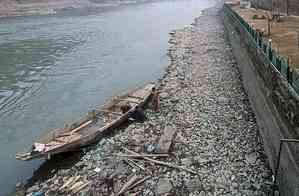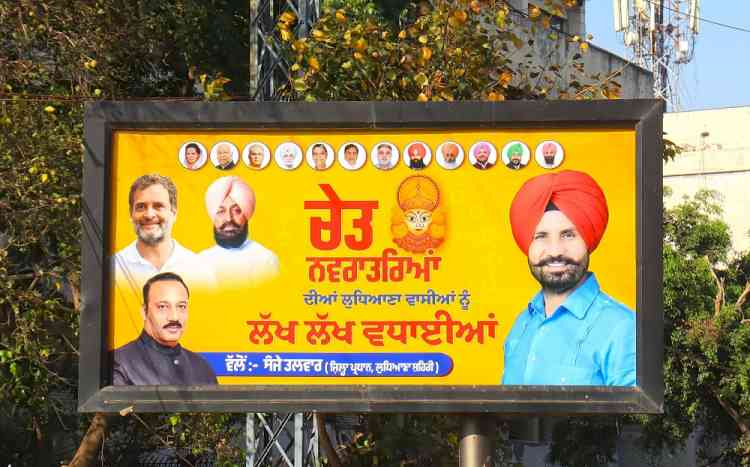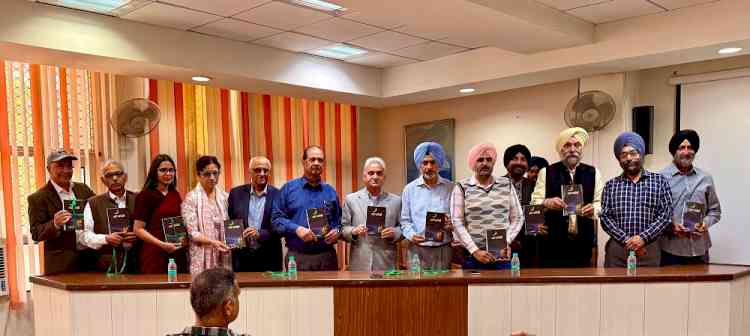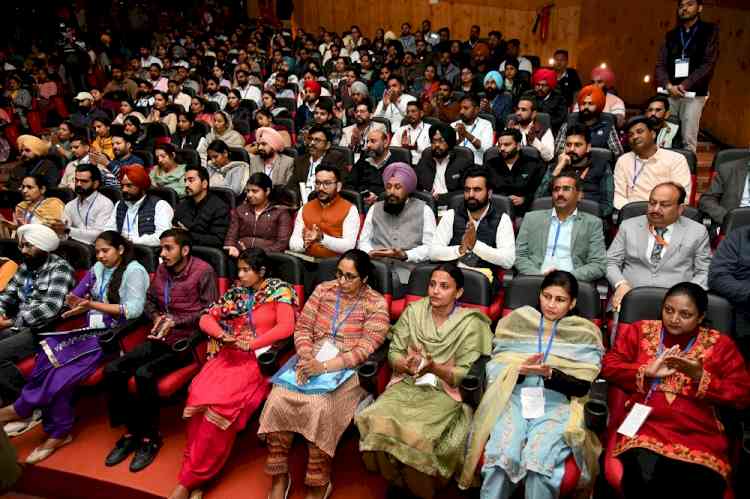Impending drought looms large on Kashmir after prolonged dry spell
As an unprecedented dry spell has hit Kashmir this winter, people are frightened by the dangers of drought looming over their heads. There has been just one major snowfall in the Valley this winter.

Sheikh Qayoom
Srinagar, Feb 17 (IANS) As an unprecedented dry spell has hit Kashmir this winter, people are frightened by the dangers of drought looming over their heads. There has been just one major snowfall in the Valley this winter.
The question bothering people is -- Is Kashmir heading towards a drought in 2025?
When a heavy snowfall occurred on December 28, 2024, hopes had been kindled of a bountiful summer. Those hopes were dashed to the ground with a completely dry January and a hitherto dry February. Elders are saying they don’t have memories of this disaster in the making.
“In my lifetime, I have never seen the spring in our village with such low water level. Small outlets of water from this spring have dried up and there is only one outlet that works at the moment,” said Fatima Bibi, 97, who lives in Haripora village of Ganderbal district.
The bad news is that a large number of springs in this district are on the verge of going dry. The famous Achabal spring in Anantnag district which was decorated with a large garden by Empress Noor Jahan in 1620, has dried up and so have the drinking water supplies of over 15 villages built on the waters of this spring.
Thousands of kanals of Paddy land depend on the waters of Achabal Spring for irrigation. The water discharge at the Verinag spring in Anantnag district is running very low. Verinag Spring is the source of the Jhelum River that runs through the middle of the Valley right from its source through Anantnag, Pulwama, Srinagar, Ganderbal, Bandipora and Baramulla districts till it crosses the Line of Control (LoC) and finally joins the Indus River at Mithankot in Pakistan. Before joining the Indus, Jhelum and Ravi join the Chenab River while Beas joins the Sutlej River, and before meeting the Indus River, both Sutlej and Chenab join each other to form the Panjnad River.
The entire agriculture and horticulture in Anantnag, Srinagar, parts of Ganderbal, Bandipora and Baramulla districts depend on the Jhelum River.
The ‘Khelo India Gulmarg 2025’ games scheduled to be held in the ski resort of Gulmarg have been postponed as the resort has little snow to sustain winter sports. Other tourist destinations like Sonamarg and Pahalgam also suffer because of scant snowfall this season.
Villages where perennial water sources like springs existed for hundreds of years are being supplied potable water through water tanks by the local Jal Shakti department. People in some villages of Ganderbal district are presently receiving water tanks to sustain their drinking water needs. The worst news for the villagers in this district is that a large number of perennial springs have tested unsafe water because of the presence of bacteria. Contaminated drinking water causes several diseases, including jaundice.
The Sindh stream passing through the middle of Ganderbal district right from its source in the foothills of the Zojila Pass till it joins the Jhelum River at Shadipora shows signs of drying up. Historically, floods and not droughts have wreaked havoc in Kashmir in the past. If the rain gods do not oblige, the Valley of springs and rivers would soon be a huge piece of parched land.
The other worrying part is that the perennial water reserves in the mountains have started melting because of unusually high day temperatures. During the last week, the day temperature has been nearly 8 degrees Celsius above normal.
“This is the real danger looming over our head. With no replenishment during the winter months, abnormally high temperatures force premature meltdown in perennial water reserves and glaciers. Unless we get compensatory rainfall during the coming months, the scene is horrifying,” said Mansha Nisar, an environment scientist.
During past floods and droughts, the people of the Valley would offer congregational prayers to invoke Allah’s blessings. They would visit the shrines of saints and pray to Allah at those shrines for mercy.
“The system of our faith is also showing signs of decay. We have become too materialistic and this has made us ignorant of the fact that even with tons of gold and pillars of cash, one can still die for a drop of water,” said Ghulam Mohammad Rather, 54, a farmer in north Kashmir.
Chief Minister Omar Abdullah has said that meetings of officials are being held to work out contingency plans. Such plans would mean little if Nature decides to punish Kashmir for fiddling with its delicate ecological balance.
--IANS
sq/dpb


 IANS
IANS 








